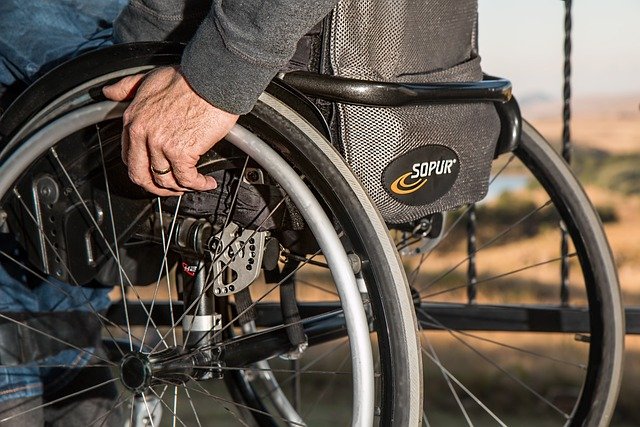Exploring Senior Apartments and What to Know Before Choosing One
Senior apartments represent a housing solution designed specifically for older adults who want to maintain their independence while accessing community amenities and optional support services. These residential communities differ significantly from traditional nursing homes, offering private living spaces combined with shared facilities and social opportunities. Understanding the features, benefits, and considerations involved in senior apartment living can help you make an informed decision about this increasingly popular housing option for aging in place with enhanced security and community connection.

Senior apartments have emerged as a preferred housing choice for many older adults seeking a balance between independence and community support. These specialized residential communities cater to individuals typically aged 55 and older, providing an environment that promotes active living while offering peace of mind through various safety features and optional services.
What Senior Apartments Are and Who They Serve
Senior apartments are age-restricted housing communities specifically designed for older adults who can live independently but may benefit from certain accommodations and community features. Unlike assisted living facilities, residents in senior apartments maintain full autonomy over their daily routines and personal care. These communities support independent living by removing common barriers that older adults face in traditional housing, such as home maintenance responsibilities, yard work, and isolation from peers.
The target demographic includes active seniors who want to downsize from larger homes, individuals seeking a more social living environment, and those who prefer the security of living in a community with age-appropriate amenities. Many residents are drawn to the opportunity to form friendships with neighbors who share similar life experiences and interests.
Everyday Features in Modern Senior Apartments
Modern senior apartment communities typically feature private homes or apartments that serve as individual living spaces, complete with kitchens, bathrooms, and living areas. These units often include accessibility features such as grab bars, wider doorways, and step-free entrances to accommodate mobility needs.
Shared amenities form a central part of the senior apartment experience, commonly including fitness centers with age-appropriate equipment, swimming pools, libraries, computer rooms, and multipurpose spaces for activities and events. Community spaces such as dining rooms, lounges, and outdoor gardens provide opportunities for social interaction and recreation.
Optional on-site support services may include housekeeping, meal plans, transportation services, and wellness programs. Some communities also offer concierge services, maintenance support, and emergency response systems, allowing residents to access help when needed while maintaining their independence.
How This Lifestyle Differs from Traditional Care Homes
The distinction between senior apartments and traditional care homes lies primarily in the level of independence and care provided. Senior apartments focus on housing and community amenities rather than medical care or assistance with daily living activities. Residents typically do not require help with bathing, dressing, or medication management, which are common services in assisted living or nursing home facilities.
Many older adults find this lifestyle appealing because it eliminates the responsibilities of homeownership while preserving personal freedom and privacy. The social aspect particularly attracts those who may feel isolated in traditional housing situations, as senior apartment communities naturally facilitate interaction through shared spaces and organized activities.
Main Benefits of Senior Apartment Living
Comfort represents a primary advantage, as these communities are designed with older adults’ needs in mind, featuring age-friendly layouts, climate control, and modern appliances. Safety benefits include secure building access, emergency call systems, and the reassurance of having neighbors and staff nearby.
Independence remains intact, as residents maintain their own schedules, cooking preferences, and lifestyle choices while having access to services when desired. The active community environment promotes social engagement through planned activities, clubs, and informal gatherings, contributing to mental and emotional well-being.
Peace of mind comes from knowing that support is available if circumstances change, and many communities offer pathways to higher levels of care within the same organization or nearby facilities.
Key Factors to Consider When Exploring Senior Apartments
Location plays a crucial role in satisfaction with senior apartment living. Consider proximity to healthcare providers, shopping centers, family members, and cultural attractions. Accessibility features should match current and potential future needs, including wheelchair accessibility, elevator access, and proximity to parking.
Services offered vary significantly between communities, so evaluate which amenities and support options align with your preferences and lifestyle. Some communities focus on active recreation, while others emphasize cultural activities or wellness programs.
Amenities to consider include dining options, fitness facilities, transportation services, and social spaces. Nearby resources such as medical facilities, pharmacies, grocery stores, and public transportation should also factor into your decision-making process.
| Community Type | Average Monthly Cost | Key Features |
|---|---|---|
| Independent Living Community | $2,000 - $4,000 | Private apartments, basic amenities, minimal services |
| Enhanced Senior Apartments | $3,000 - $5,500 | Full amenities, dining options, transportation, activities |
| Luxury Senior Communities | $4,500 - $8,000+ | Premium amenities, concierge services, multiple dining venues |
Prices, rates, or cost estimates mentioned in this article are based on the latest available information but may change over time. Independent research is advised before making financial decisions.
Senior apartments offer a compelling housing solution for older adults seeking to maintain independence while enjoying community benefits and security. The decision to move to a senior apartment community should be based on careful consideration of personal needs, preferences, and financial circumstances. By understanding what these communities offer and evaluating key factors such as location, services, and amenities, you can make an informed choice that supports your desired lifestyle and future well-being. The growing popularity of senior apartments reflects their success in meeting the evolving needs of today’s active older adult population.




